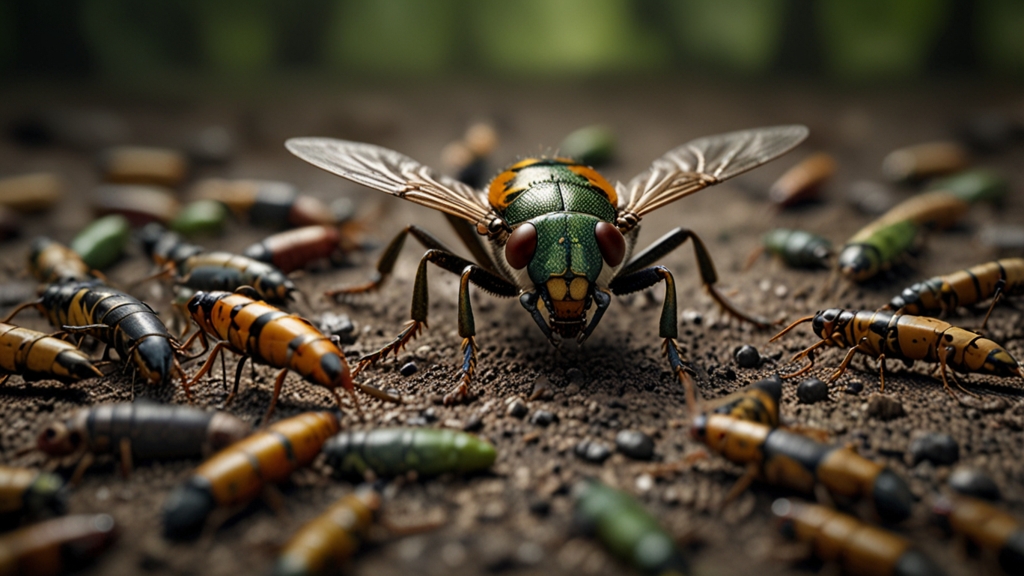Hidden in Plain Sight: The Endangered Species Among Us
When we think of endangered species, our minds often wander to distant places—tropical rainforests, arid savannas, or remote mountains. However, the truth is that many endangered species exist right under our noses, hidden in the environments we inhabit daily. These species, living in urban, suburban, and even rural areas, face unique challenges and often go unnoticed by the very people who could make a difference in their survival.
The Urban Jungle: A Habitat Teeming with Life
Cities and towns are bustling hubs of human activity, but they are also surprisingly rich natural habitats. From birds to mammals and insects, these animals have adapted to make the most of our urban landscapes. Yet, the challenges they face are immense, from habitat destruction to pollution and human-wildlife conflict.
“We often overlook the rich biodiversity within our cities, focusing instead on the more 'charismatic' wildlife in far-off locales.” — Dr. Jane Wilson, Urban Ecologist
Take the Peregrine Falcon, for instance. Once teetering on the brink of extinction due to pesticides like DDT, these birds have made a remarkable comeback and now nest on skyscrapers and bridges in cities worldwide. However, their success story is not universal. Many urban-dwelling species, such as certain bat and bee populations, are still in decline due to habitat loss and other human-induced factors.
Suburban Spaces: The Overlooked Frontiers
Suburban areas present a unique mix of natural and human-modified environments. Lawns, gardens, parks, and small wooded areas can all serve as temporary or permanent homes for various species. Unfortunately, the pressure to develop and expand these areas often leads to habitat fragmentation, creating isolated populations that struggle to survive.
One such example is the Eastern Box Turtle. Found in many suburban areas of the United States, this turtle is listed as a vulnerable species due to habitat destruction, road mortality, and collection for the pet trade. Efforts to protect their habitats and create wildlife corridors are essential steps for their conservation.
Rural Retreats: Not Always Safe Havens
Rural regions are often imagined as pristine natural worlds. However, these areas too face pressures from agricultural expansion, logging, and other human activities. Many species residing in these supposedly untouched areas are under threat.
“Conservation isn't just about protecting far-off forests and oceans; it's about recognizing and safeguarding the nature in our own backyards.” — Laura Martinez, Conservation Biologist
The Monarch Butterfly is a prime example. These iconic insects rely on milkweed plants found in rural and semi-rural areas during their breeding season. Widespread use of herbicides and the conversion of land for agriculture have significantly reduced the availability of milkweed, leading to a stark decline in Monarch populations.
What Can We Do?
Acknowledging the presence of endangered species in our everyday environments is the first step toward their conservation. Here are a few ways you can make a difference:
- Support Local Conservation Initiatives: Many local groups work tirelessly to protect habitats and species in urban and suburban areas. Your support can amplify their impact.
- Create Wildlife-Friendly Spaces: Small changes in your garden or community can provide critical resources such as food, water, and shelter for local wildlife.
- Educate Yourself and Others: Awareness is key. The more people know about the endangered species living among them, the more likely they are to take action.
- Advocate for Policy Change: Lobbying for stronger environmental regulations can lead to broader protections for endangered species.
Conclusion
Endangered species are not just exotic creatures in far-flung corners of the world; they are our neighbors, living in the same spaces we do. By recognizing and addressing the challenges faced by these hidden species, we can contribute to their survival and ensure that our shared environments remain vibrant and diverse for generations to come.
The next time you step outside, take a moment to observe the life around you. You might be surprised at the diversity of species that call your community home. Their survival depends not just on grand gestures but on everyday actions and awareness, hidden in plain sight yet critical to biodiversity.








